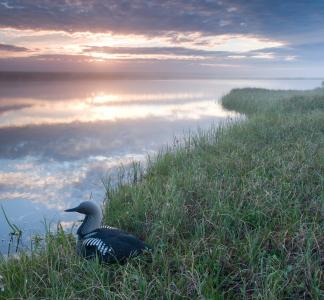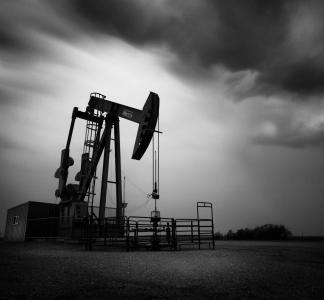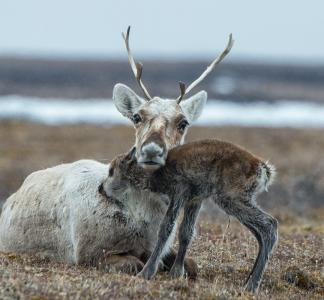5 gems we need to protect in the Western Arctic

The Western Arctic supports caribou, polar bears, broad whitefish, migratory birds and a subsistence way of life for Nuiqsut and other nearby Alaska communities.
Florian Schulz, Protect the Arctic
Rule aimed at balancing development with preserving “Special Areas” — now under threat
In the Western Arctic lies the United States’ largest expanse of public land, a stretch that holds immense cultural significance and provides habitat to countless wildlife species. However, you wouldn’t know it by this place’s official name: “National Petroleum Reserve-Alaska.”
The name suggests a single purpose: providing oil and gas. However, the truth is this complex landscape is home to unmatched wildlife, including iconic caribou herds and polar bears. It's the traditional homelands of Indigenous Peoples who have stewarded and relied upon these lands since time immemorial. Spanning more than 23 million acres, almost as big as the state of Indiana, the Western Arctic is not just a place where we find petroleum—and it doesn’t deserve to be thought of that way.
The Arctic is not a remote frontier for resource extraction; it is a fragile ecosystem facing unprecedented threats from climate change and human activity.

An Arctic fox. It's Iñupiaq name is Qusrhaaq
Florian Schulz, Protect the Arctic
Sure enough, the Western Arctic is under constant threat from oil companies eager to industrialize the landscape with oil rigs, drill pads, pipelines and infrastructure aimed at extracting, refining and distributing fossil fuels that contribute to the climate crisis.
The rapid pace of warming in the Arctic (as much as four times faster than the rest of the world) amplifies the urgency of protecting its delicate landscape from that fossil fuel development. Melting sea ice, habitat degradation and the disruption of migratory patterns are just some of the consequences.
After the approval of ConocoPhillips’ massive Willow project in 2023, the Biden administration finalized a rule in 2024 aimed at ensuring maximum protection for “Special Areas” (along with greater protections across the Western Arctic). The Bureau of Land Management even began exploring the potential for expanding these protections by adding Special Areas.
Now, as of November of 2025, the administration has moved to dismantle these protections—putting wildlife, climate stability and communities at risk once again.
“Special Areas”: Gems within the NPR-A
You might be asking yourself, what are these Special Areas? They are five designated parcels of land within the Reserve that harbor exceptional ecological and cultural significance. They make up more than 13 million acres of land.
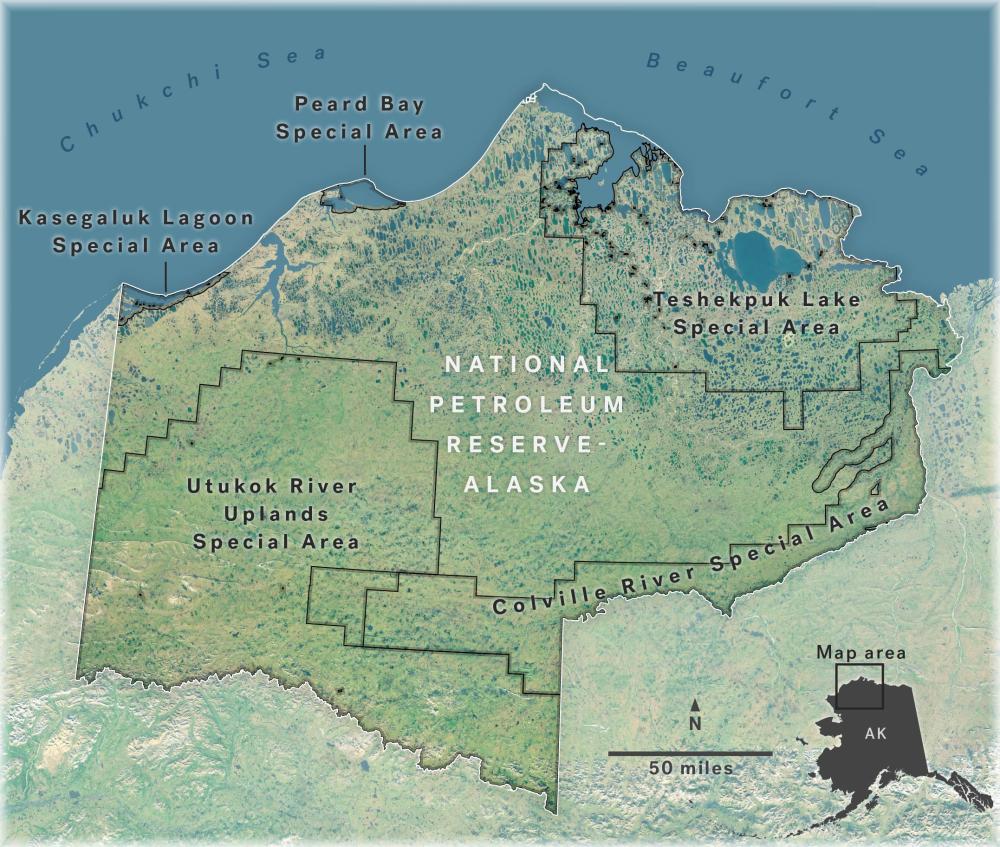
Map shows the special areas of the Western Arctic, also known as the National Petroleum Reserve-Alaska. Contains modified Copernicus Sentinel data 2023.
Teshekpuk Lake Special Area
Meaning "big enclosed coastal water" in Iñupiaq, Teshekpuk Lake Special Area is more than 3.6 million acres, home to Alaska's third largest lake, and the heart of a critical Arctic wetland complex. It shelters the Teshekpuk caribou herd during calving season and countless vulnerable birds such as king eiders and red-throated loons. Indigenous communities rely on its resources for sustenance and cultural continuity. Unfortunately, climate change-induced challenges, such as the encroachment of saltwater into freshwater lakes, threaten its delicate balance.
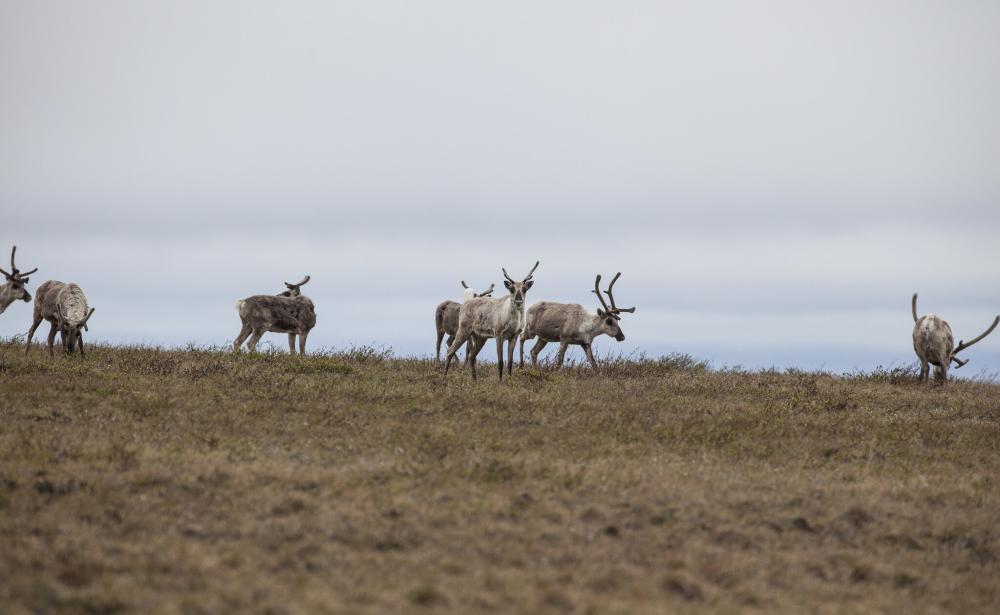
Teshekpuk Caribou in the Western Arctic.
Bob Wick (BLM)
Colville River Special Area
Spanning 2.4 million acres along Alaska's Colville River, this haven for birds hosts a rich repository of dinosaur fossils. Its rugged bluffs provide nesting grounds for gyrfalcons, peregrine falcons and golden eagles, while the river teems with vital subsistence resources like whitefish and northern pike. The nearby communities of Nuiqsut and Anaktuvuk Pass rely on a healthy Colville River for traditional and subsistence activities. The river, however, faces pressure from oil and gas development and its environmental risks.
Utukok River Uplands Special Area
The Utukok Uplands represent the largest Special Area in the Western Arctic, encompassing more than seven million acres. The Uplands have the highest concentration of Alaska brown bears in the Arctic, and they serve as critical habitat for wolves, moose and wolverines. More than 40 rural villages depend on the Western Arctic Caribou Herd that makes this area home. The Utukok river was a historic travel route for Iñupiat hunters, and it flows to the Chukchi Sea, providing an essential habitat for pink and chum salmon. However, accelerated oil and gas development threatens the region's biodiversity and the communities that depend on it.
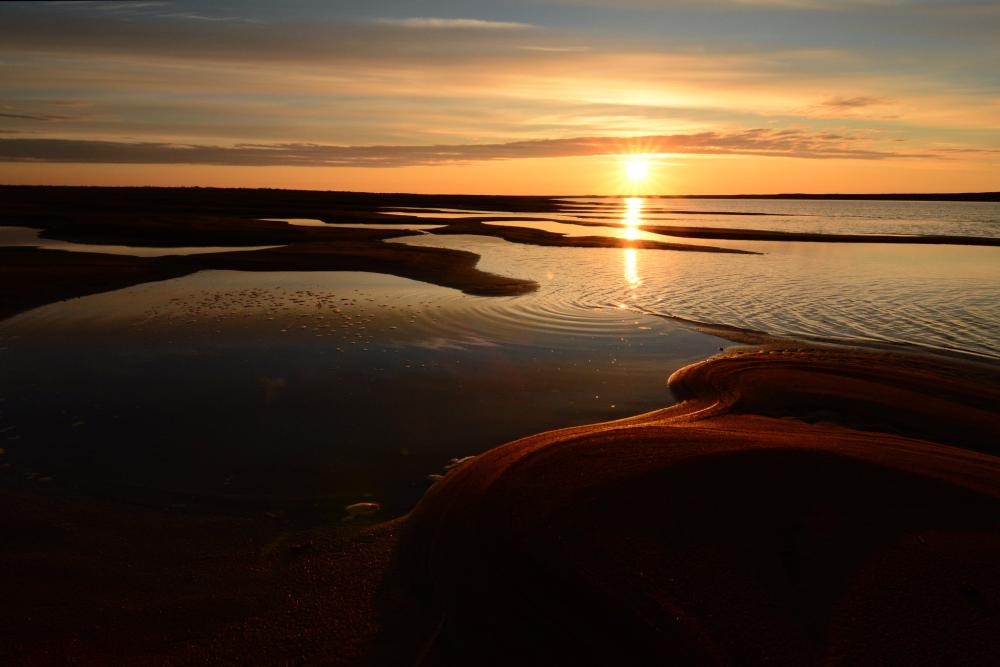
Sunset on the Colville River. North Slope, Alaska.
Paxton Woelber, flickr
Peard Bay Special Area
Peard Bay spans 107,000 acres and serves as a sanctuary for ice-dwelling seals and nesting spectacled eiders. Tens of thousands of migrating shorebirds visit its shores, highlighting its ecological importance and vulnerability to environmental disruptions.
Kasegaluk Lagoon Special Area
Meaning “spotted seal place” in Iñupiaq, the 97,000-acre Kasegaluk Lagoon is one of the largest and most intact coastal lagoon systems in the world and supports the richest and most abundant bird life of all Alaska’s Arctic coastal lagoons. Shielded from the Chukchi Sea by a series of barrier islands, the lagoon’s shallow, protected waters are excellent habitat for molting and calving beluga whales, and support countless migratory birds, as well as seals, walrus and polar bears. The shallow sheltered waters act as crucial breeding and feeding grounds.
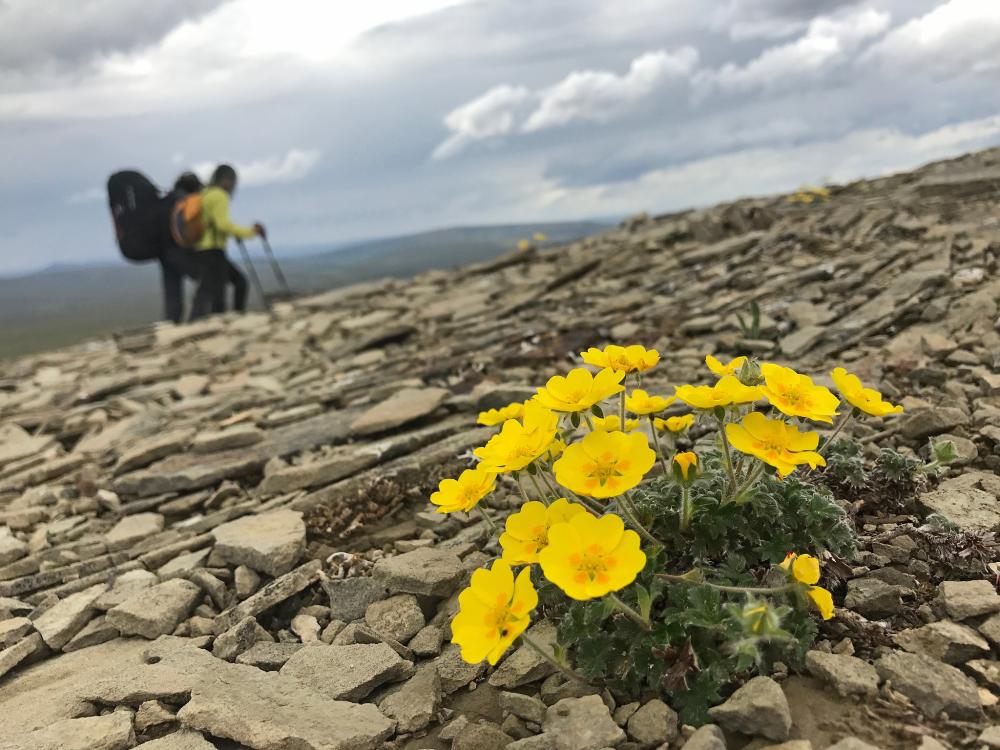
Wildflowers with hiker in background near Utukok River.
Kim Mincer, BLM
